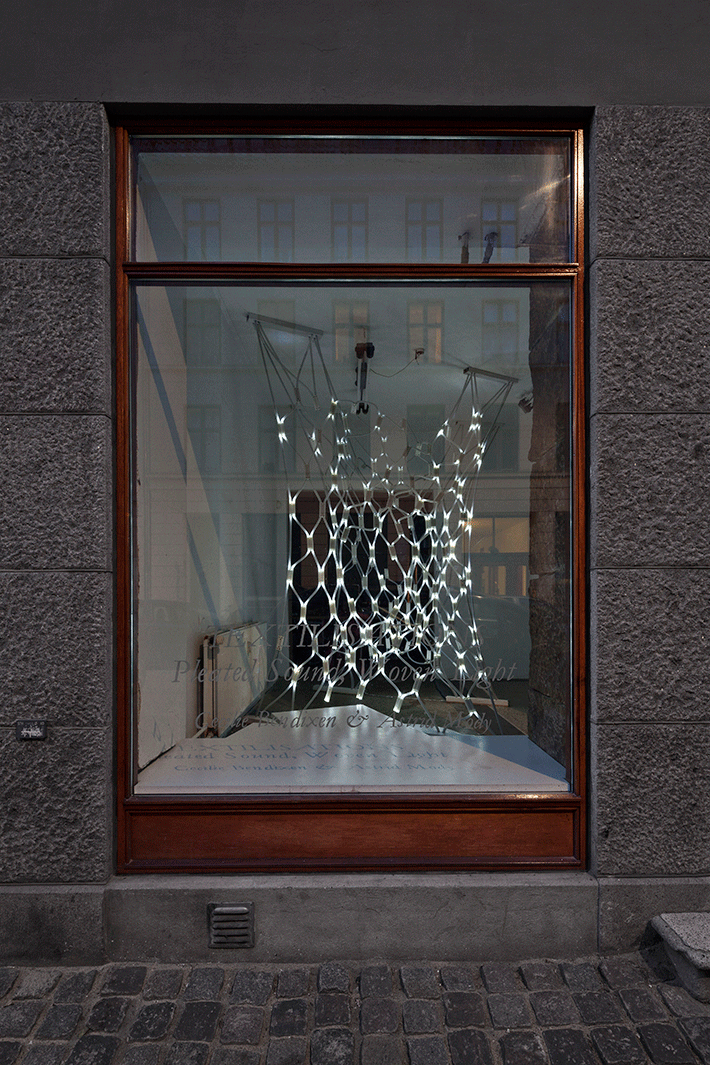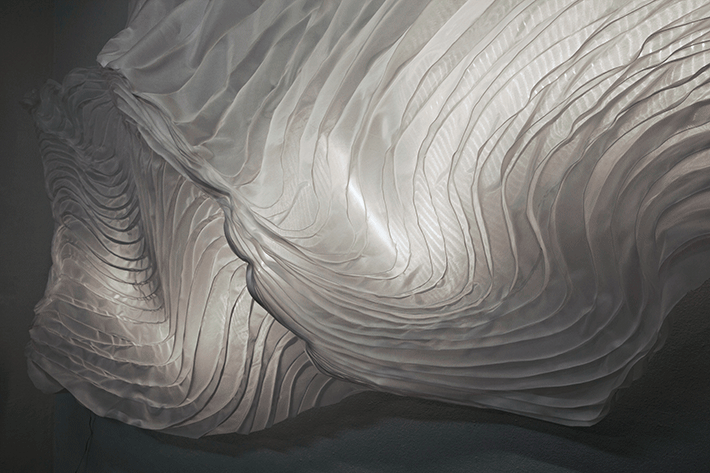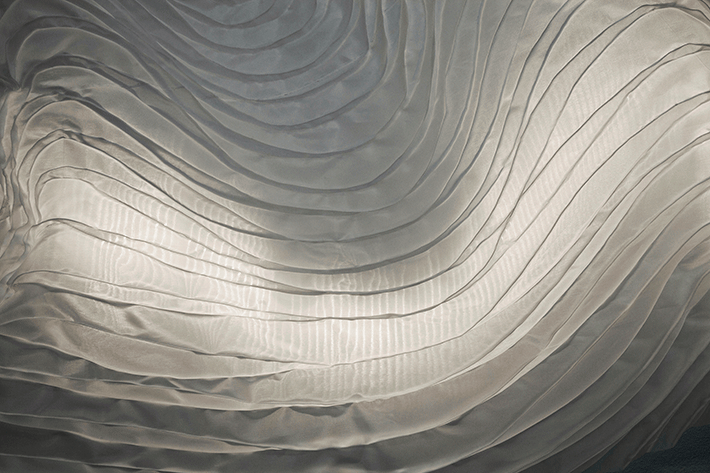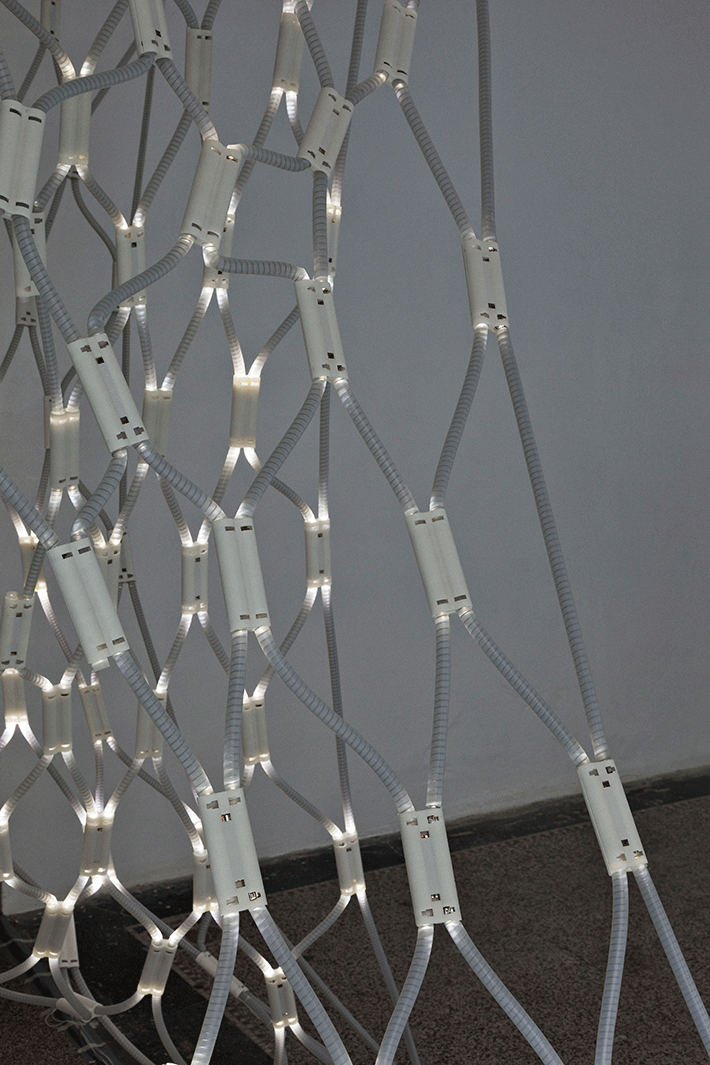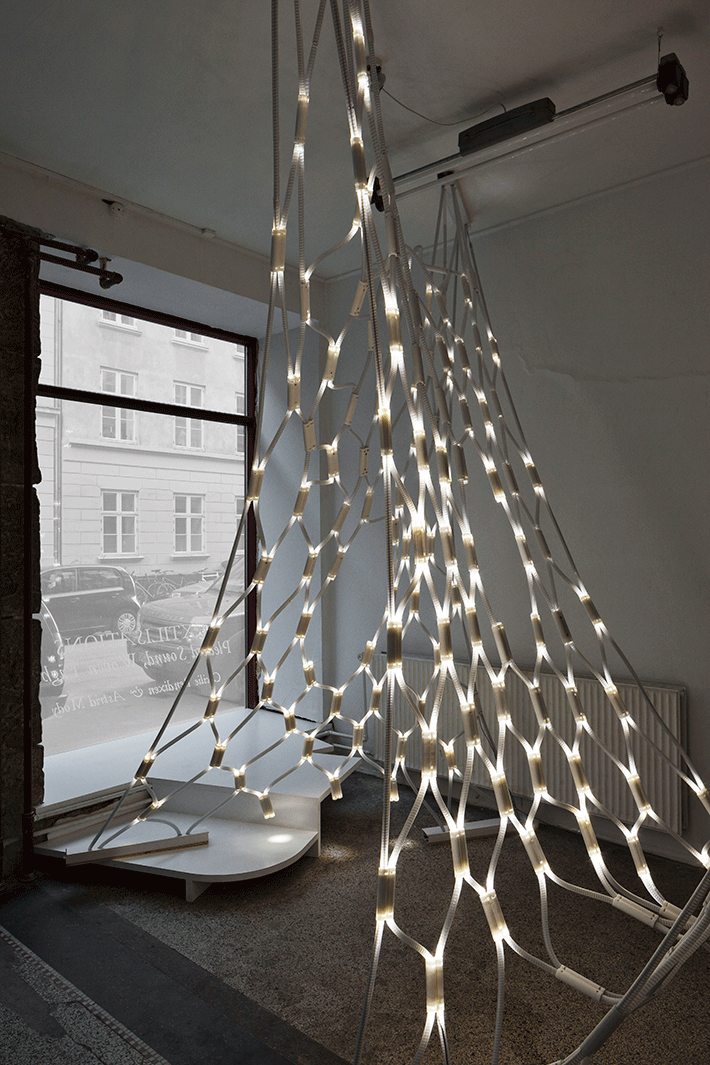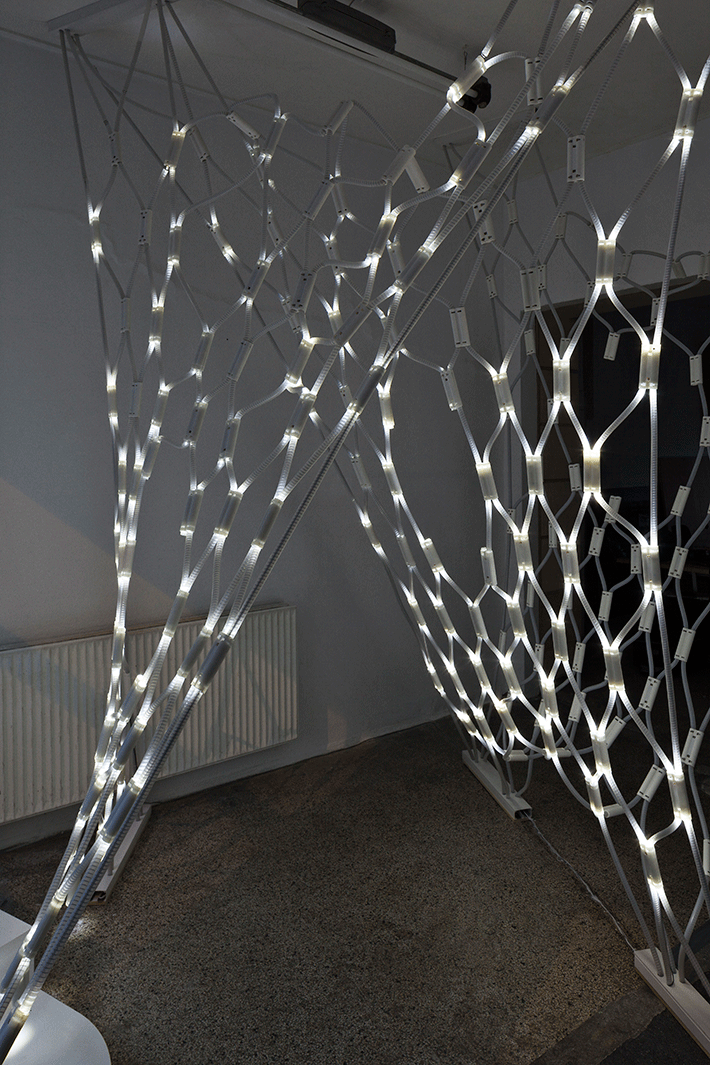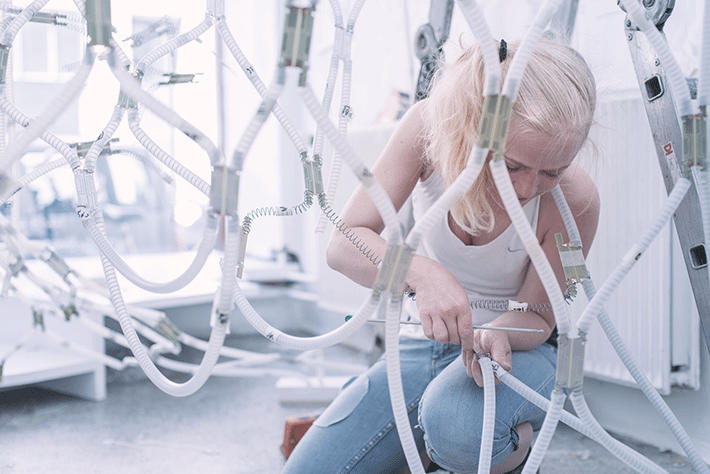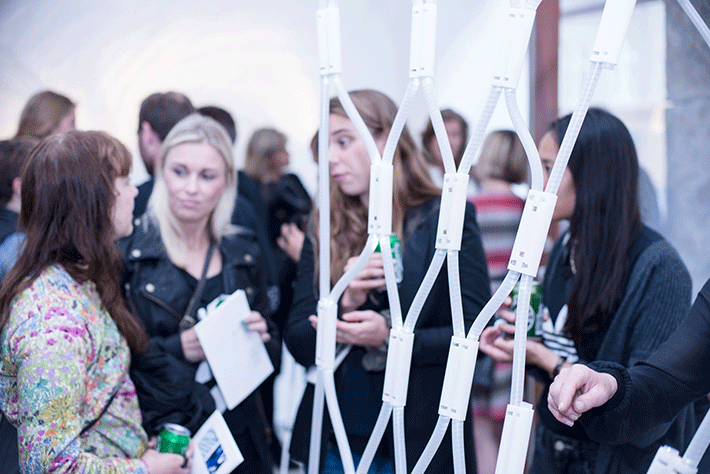
TEXTILISATIONS – Pleated Sound, Woven Light
An exhibition by Cecilie Bendixen & Astrid Mody
5. June – 1. August 2014,
Monday – Friday 9 -17.00
Opening: 5th of June, 16-20.00
Finissage and concert with Budhaditya Chattopadhyay: 1. August, 16-20.00
Imagine if sound was not only an invisible phenomenon, but could be materialized and formed as a textile – layered, pleated or creased. Imagine if light was not form-or material bound, but could be woven, casted or 3D-printed. Imagine if light and sound could address textile logics and materiality, while constructing and deconstructing spatial boundaries.
TEXTILISATIONS – Pleated Sound, Woven Light explores the immaterial phenomena light and sound and how both phenomena can construct spaces that emerge from textile logic and materiality.
Pleated Sound uses concrete textile material to construct a space composed of auditory sensations and visual associations. Woven Light explores the spatial implications of textile logics applied to LED technology.
Pleated Sound is a wall panel of sound absorbing textile, folded and fixed with stitches to a three dimensional fluttering banner, frozen in the middle of a movement.
Both the sound absorbing effect of the panel and its resemblance to a fluttering banner can build up space. Auditive sound absorption can be perceived as space constructing because the absorption of sound creates an auditory experience corresponding to the auditory experience of an open window – in both cases, the sound disappears.
Architecturally, an open window is a significant expansion of space. However, the open window created by auditory sensations can only be audibly experienced – it is a non-physical space. Though, the auditory experience can be supported by the visual expression of the fluttering banner, which may evoke associations to the unlimited space outside where the wind is blowing and the sound waves roll freely across the landscape.
Pleated Sound is made up of a textile, which in itself is sound absorbing. Sound is absorbed into a textile when its fibres and threads are exactly close enough to make the energy of the fluctuating air molecules convert into heat through friction. Sound is in that way textilised in a very concrete way – it actually becomes (heated) textile . The sound absorbing effect of the panel is enhanced by the folds of the banner, which is altered by the materiality of the textile. The fabric’s sculptural potentials emerge particularly from the rigidity and flexibility of the fabric. And finally, the design of the textile, imagining being an other type of textile: the textile of a fluttering banner, is a further textilisation of the sound absorbing fabric.
Pleated Sound is an attempt to draw poetic elements of the weather into our houses.
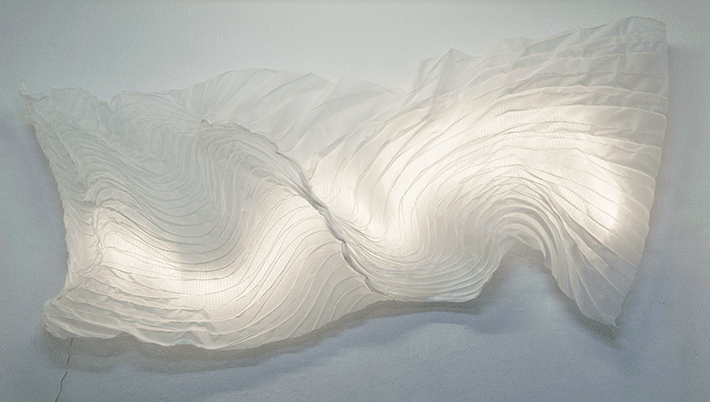
Woven Light suggests a flexible plug and play system, consisting of only two components: LED nodes and varying lengths of connective silicone tubing.
In Woven Light a digital pixel gains a new spatial agency. The occupant can not only look at the pixel – as known from usual media screens – but can engage with it: Firstly the occupant can walk along it, secondly he/she can look inside it and thirdly the pixel structure can be entered. The distance in between the pixels (pitch distance) differs and creates a variation of spatial transparencies, connecting and enclosing the inhabitant.
Woven Light connects two often separated logics: module-based logic of a digital pixel and textile continuity. Textile logic of continuity is operationalized to the logic of energy and control. Each node houses a cluster of four white low power consumption LEDs. A third part of the nodes (layer towards the back space) contain Wireless control PCB (Philips Hue Compatible Light sources) and enable control of the two sides of the nodes in regard to lightness and pre-set rhythms. The rest of the nodes (middle and front layer towards the street) “just” lights.
To establish continuity of energy and control the modules are connected and a fabric-like, tensile form structure emerges. In this structure only certain configurations of modules are possible to allow reliant energy continuity.
Woven Light is a part of a larger research trajectory, which focuses on proposing new ways of working with LED technology in an architectural practice as a critique to the dominant digital, screen-related connections.
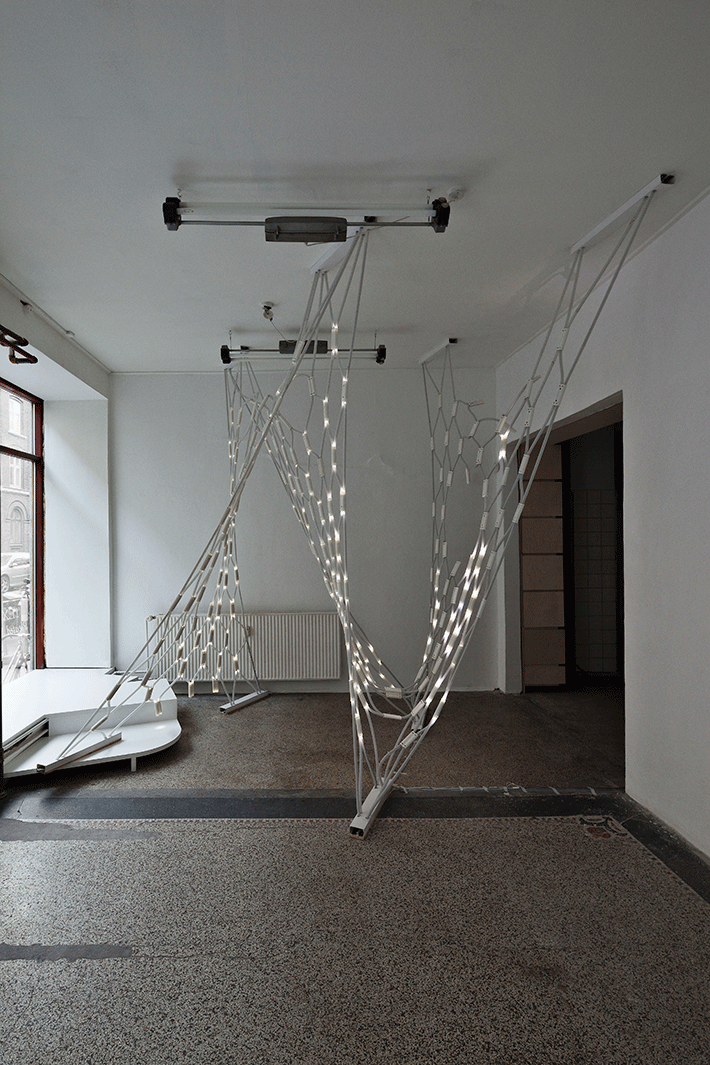
Cecilie Bendixen is an architect and PhD. She runs the office Textile Space (http://www.tekstilerum.dk/), which develops and manufactures architectural spaces of textiles, both sound absorbing and visually constructed.
Astrid Mody is an architect and PhD student. The PhD project “Textilisations of light – operationalizing textile thinking and materiality to develop the potentials of media facades” is a cooperation in between Philips Research (Netherlands) and KADK, Institute of Technology, http://www.karch.dk/uk/Menu/About+The+School/Employees/Person/Astrid.Mody.
Budhaditya Chattopadhyay is an artist and PhD student primarily engaged with sound and listening. Working at the intersection between cinema, digital media and sound art, and interpenetrating research, artistic process and practice, he incorporates audio, video and text generating a diverse range of sound-based artworks for exhibition, publication, installation and live-performance, see also http://budhaditya.org/about/.
